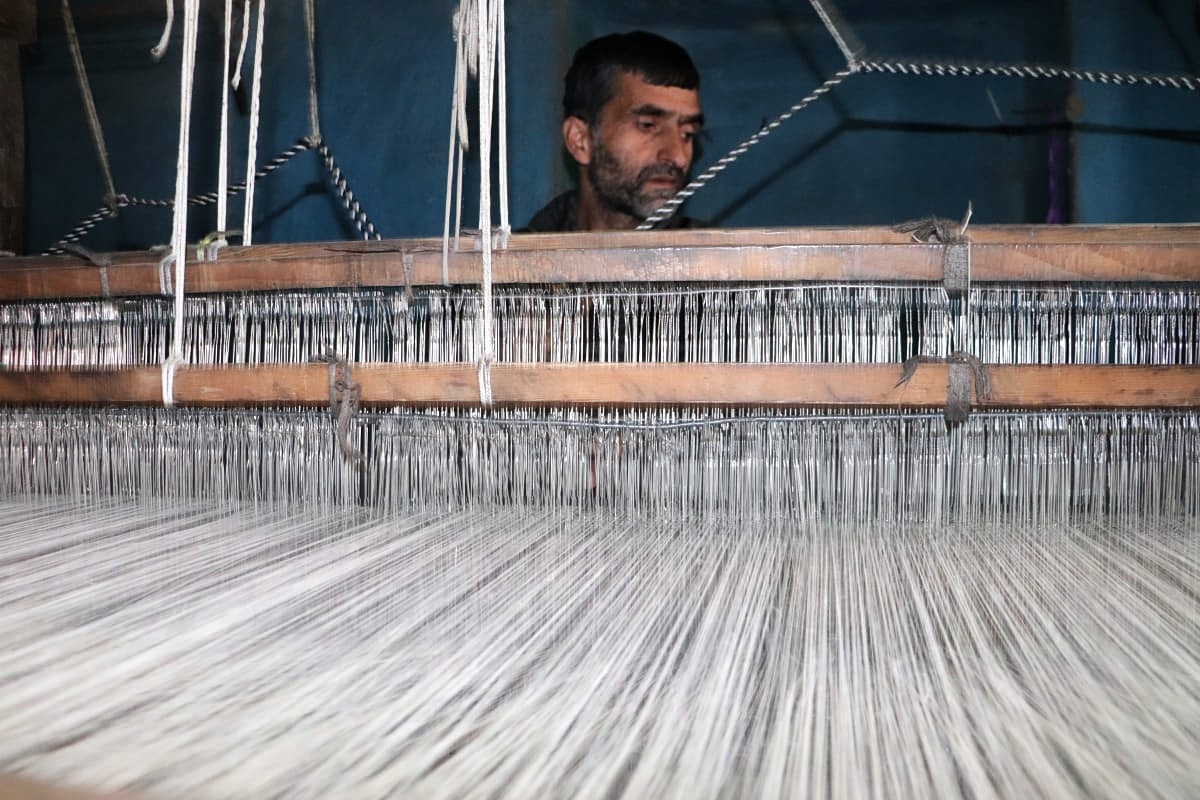Weavers in Inder and Badibagh villages of Pulwama once sold tweed to international markets in Europe and America. Second World War dealt the first blow to the craft. The second blow came from the first war at home. Haroon Mirani profiles the two villages.

On his archaic handloom, Mohammed Subhan Mir, 55, has been weaving magic in the shape of different designs of Tweed for the last four decades. The last time he has seen something progressive happening in his career was when he upgraded from pit-type loom to fly shutter loom in the late seventies. Nothing much has changed in Mir’s life after this government-subsidised scheme. Beyond that, it has been despair overwhelming the brief spells of development.
Mir is one among the 800 weavers of the two villages – Inder and Badibagh – in the Pulwama district. Together they comprise the set of skilled craftsmen that have earned this area the name of Tweed capital of Kashmir. People say about this area that you throw any piece of cloth at them and they will replicate its design in full on their looms.
“You can’t imagine how skilful the weavers of this area are. Their designs have received appreciation from customers living in Europe and America,” says Mir.
In its golden age, the tweed weaved in this area was exported to countries like UK, France and Germany in the early twentieth century. All that changed after Second World War started as exports dried up. Together with changing political geography of Kashmir, the industry lay on its deathbed.
On the verge of extermination, the trade survived after the government started a policy of modernisation of looms in 1975. It provided 5000 looms to the weavers on subsidised rates. Coupled with new opportunities in new markets, the weavers again started to weave quality tweed. But tragedy struck again in 1989 when the armed insurgency erupted in Kashmir.
Every second household in the village works on handlooms to manufacture tweed, shawls, blankets and other garments. The weavers in Inder and Badibagh have created and modified a number of designs that have been acclaimed not only in Kashmir but outside the state too. In fact, weaving determined the fortune of families.
But now the situation is changing fast.
“I have been a weaver for 40 years. My father worked as a weaver and my grandfather too did the same job,” says Mir. A master craftsman, he is not too optimistic that coming generations would adopt this trade. “One of my sons works as a teacher and others don’t have any interest in it as the job is low paid and orders come once a while.”
Mir remembers the days when Inder and Badibagh buzzed with a continuous rattling of handlooms. “Now an occasional rattle is heard when you cross a lane.”
Inder is unique with prosperity and poverty crisscrossing each other at every second corner. It is not rare to notice shackled homes brimming with extended families living adjacent to a magnificent villa with relative calmness. Clean concrete lanes suddenly disappear into muddy pathways beaten to life.
The primary occupation of Inder and Badibagh has been agriculture and horticulture. Weaving was their optional job. But as families expanded, landholdings decreased and unemployment increased, many clung to low-paying weaving jobs. Some of the new entrants in the handloom sector have been the local fishermen, who had to forego their profession after the nearby stream dried up.
After working for 8-10 hours a day, Mir says that he manages to earn around 4000 rupees per month. “How will you expect a literate person to crumple himself in this job from dawn to dusk,” says Mir.
The income, weavers say, does not satisfy their basic needs. A good number of them in these twin villages live in abject poverty. The work is erratic, wages low and payments do not come in time.
Besides low wages, weavers lack spaces for setting up their looms. With families growing, some weavers have been forced to put their looms in the open sky, risking their health and quality of work too.
Over the years, the living standard of the population in this area has gone up – primarily due to education, some successful government schemes and exposure to the outside world. But the craftsmen have tasted little of the economic empowerment. Maybe that is the reason that an old horse-cart plies alongside a brand new luxury car on a road about to be dug for some government developmental scheme.















